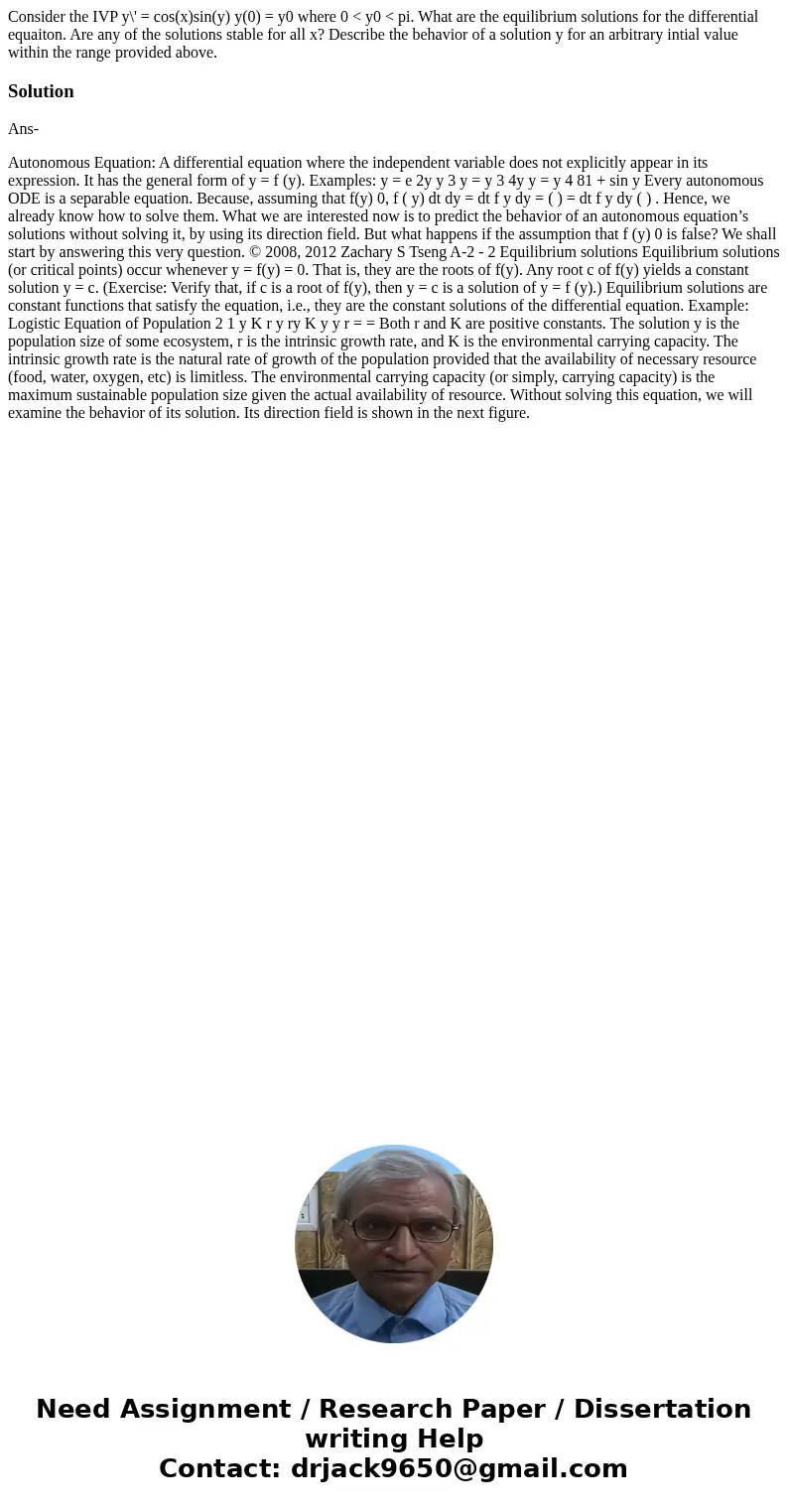Consider the IVP y cosxsiny y0 y0 where 0 y0 pi What are
Consider the IVP y\' = cos(x)sin(y) y(0) = y0 where 0 < y0 < pi. What are the equilibrium solutions for the differential equaiton. Are any of the solutions stable for all x? Describe the behavior of a solution y for an arbitrary intial value within the range provided above.
Solution
Ans-
Autonomous Equation: A differential equation where the independent variable does not explicitly appear in its expression. It has the general form of y = f (y). Examples: y = e 2y y 3 y = y 3 4y y = y 4 81 + sin y Every autonomous ODE is a separable equation. Because, assuming that f(y) 0, f ( y) dt dy = dt f y dy = ( ) = dt f y dy ( ) . Hence, we already know how to solve them. What we are interested now is to predict the behavior of an autonomous equation’s solutions without solving it, by using its direction field. But what happens if the assumption that f (y) 0 is false? We shall start by answering this very question. © 2008, 2012 Zachary S Tseng A-2 - 2 Equilibrium solutions Equilibrium solutions (or critical points) occur whenever y = f(y) = 0. That is, they are the roots of f(y). Any root c of f(y) yields a constant solution y = c. (Exercise: Verify that, if c is a root of f(y), then y = c is a solution of y = f (y).) Equilibrium solutions are constant functions that satisfy the equation, i.e., they are the constant solutions of the differential equation. Example: Logistic Equation of Population 2 1 y K r y ry K y y r = = Both r and K are positive constants. The solution y is the population size of some ecosystem, r is the intrinsic growth rate, and K is the environmental carrying capacity. The intrinsic growth rate is the natural rate of growth of the population provided that the availability of necessary resource (food, water, oxygen, etc) is limitless. The environmental carrying capacity (or simply, carrying capacity) is the maximum sustainable population size given the actual availability of resource. Without solving this equation, we will examine the behavior of its solution. Its direction field is shown in the next figure.

 Homework Sourse
Homework Sourse